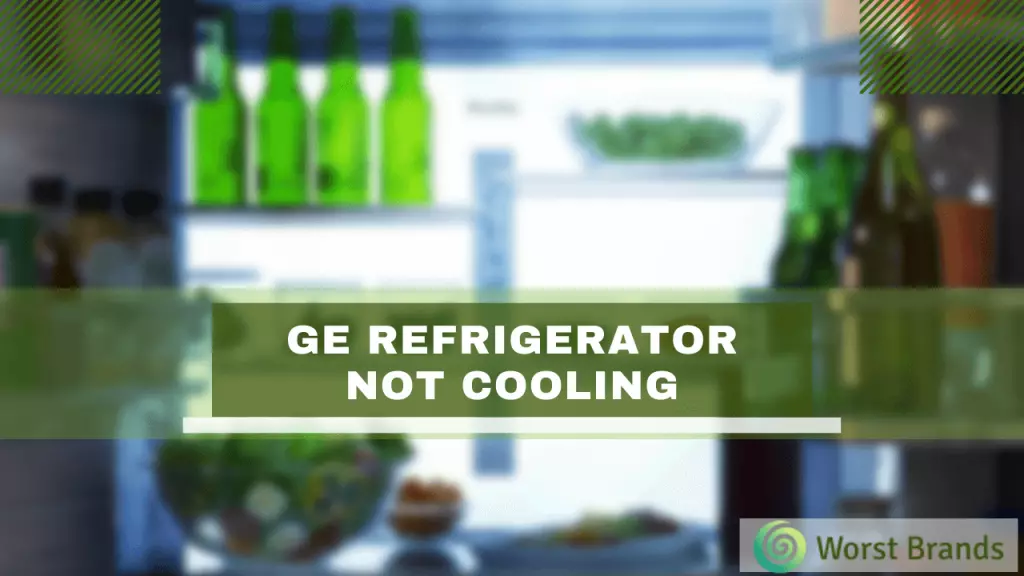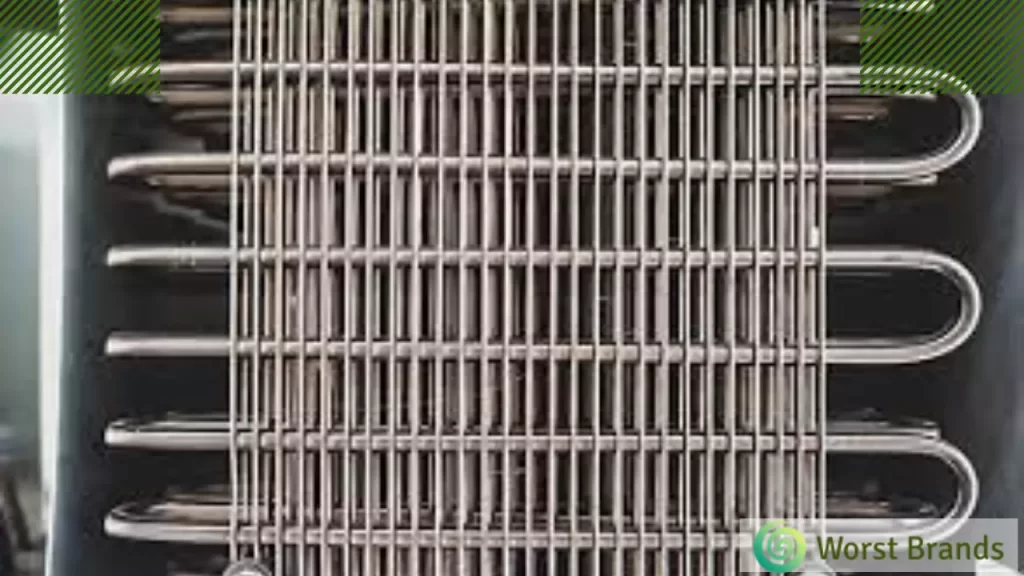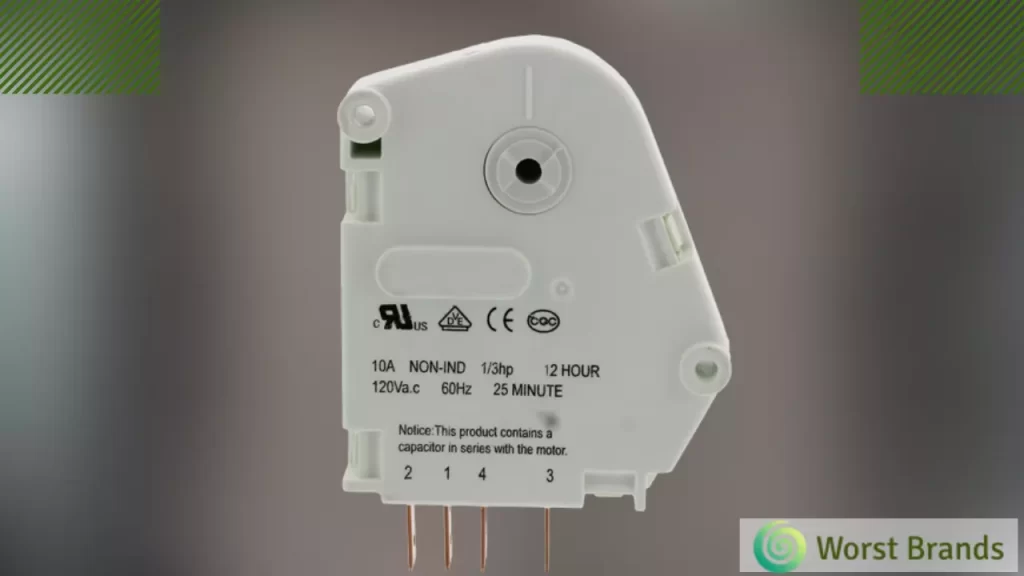Having a GE refrigerator that is not cooling can be a genuine inconvenience. It can cause you to go out and buy more groceries than you need because of spoilage in the fridge.
The main reasons for GE refrigerators not cooling are improper temperature settings, broken parts, clogged ducts, or a leaky evaporator fan motor.
Therefore, to help you get rid of this problem with some easy GE fridge troubleshooting tips, we have compiled a list of the most common issues.
Keep reading till the end to find out the real reason.

Table of Contents
- How to Fix GE Refrigerator Not Cooling?
- 1. Troubleshooting Temperature Settings on a GE Refrigerator
- 2. Ensuring Proper Cooling: Cleaning Condenser Coils
- 3. Resolving Condenser Fan Motor Issues
- 4. Investigating the Defrost Timer: A Step-by-Step Guide
- 5. Replacing Improper Door Seal:
- 6. Repairing Leaks or Clogs in the Evaporator Fan Motor
- 7. Seeking Professional Assistance:
- Final Words
- Steven Settles
How to Fix GE Refrigerator Not Cooling?
Here are a few things to check when your GE refrigerator won’t cool.
1. Troubleshooting Temperature Settings on a GE Refrigerator
As a GE refrigerator owner, it can be extremely frustrating when your fridge stops cooling properly.
One of the first things to check when this happens is the temperature settings.
Often, improper temperature settings can be the culprit behind a GE refrigerator not cooling.
To check the temperature settings, begin by opening the fridge and taking a look at the thermostat.
The temperature settings on your GE fridge should be between 34-38 degrees Fahrenheit (F) for fresh food storage and 0 degrees F for frozen food storage. The fridge will not cool properly if the temperature is too low.
In addition to checking the temperature settings, ensure that nothing is blocking airflow on the back of the refrigerator.
This can include spills or other items placed behind the fridge. If the airflow is blocked, it can prevent the refrigerator from properly circulating cool air and cause spoilage.
2. Ensuring Proper Cooling: Cleaning Condenser Coils

One crucial step in maintaining the cooling function of your refrigerator is to clean the condenser coils periodically. These coils are located on the back of your appliance. They are responsible for dissipating heat from the refrigeration compressors, allowing your fridge to operate at peak efficiency.
Over time, these coils can become clogged with dust, lint, and even pet hair, obstructing airflow and reducing the ability of your refrigerator to cool properly.
To keep your coils in good working order, it’s recommended to give them a thorough cleaning every six months to a year.
Cleaning the condenser coils is a relatively simple task that can be done with a few basic tools:
- Unplug your refrigerator and use an attachment hose to vacuum around the coils.
- Use a brush attachment to scrub away any remaining debris.
- You can clean the vents by inserting a long-handled brush into them and using a vacuum cleaner if available.
Cleaning your condenser coils regularly can help ensure that your refrigerator is running efficiently and prevent unnecessary breakdowns.
Additionally, by removing dust and allergens from the coils and vents, you can improve air quality and make your fridge a healthier place for your food.
3. Resolving Condenser Fan Motor Issues
The condenser fan motor plays a vital role in the cooling process of your fridge. It helps keep the refrigerant coils cool, improves efficiency, and prevents the refrigerator from being too warm inside.
If the condenser fan motor is not functioning correctly, your fridge will not be able to cool properly.
Two main reasons why the condenser fan motor might need to be fixed are clogged condenser coils and a faulty motor.
The condenser coils are on the back of your appliance and may become clogged with dirt, lint, and pet hair over time. This can impede the cooling process and cause the fan motor to work harder than it should.
To check if this is the issue, you can use a vacuum cleaner or a long-handled brush to remove dust from the coils and vents.
If the coils are clean and the fan motor is still not working, the motor may be faulty. In this case, it is best to call in a professional to assess the problem and make any necessary repairs.
To prevent this issue in the future, it is important to regularly clean the condenser coils and ensure proper airflow around the back of your appliance.
4. Investigating the Defrost Timer: A Step-by-Step Guide

One issue that you may need help with is the defrost timer. This component controls the cooling process and ensures that your fridge and freezer are operating at the correct temperatures.
In this guide, I’ll walk you through the steps to check and potentially reset the defrost timer on your GE refrigerator.
First, it’s important to understand the two main options for the defrost timer: off or on. If your refrigerator has been running for more than 24 hours and it’s not cooling, the defrost timer is likely off.
However, the defrost timer may be on if the fridge has been running for less than 24 hours and it still needs to cool. In this case, the refrigerator will start up again after it cools down.
- To reset the defrost timer, you will need to start by turning off the power to the unit by unplugging it.
- Next, remove all of the content from the lower freezer door shelf.
- After this, press and hold the defrost timer knob for five to ten seconds.
- Release the knob and plug the refrigerator back in. If the defrost timer works appropriately, the compressor should start up within five minutes.
It’s important to note that if the issue persists even after you have reset the defrost timer, it may be a sign of a more significant problem.
In this case, it’s best to contact a professional for further assistance.
By following these steps, you can quickly and easily check and reset the defrost timer on your GE refrigerator and resolve any cooling issues you may be experiencing.
5. Replacing Improper Door Seal:
Overheating and undercooling are the most common causes of a refrigerator not cooling properly.
The seal on the door is also an important factor in a refrigerator’s efficiency.
The improper seal can cause excessive heat in the fridge and cause it to under-cool.
It can also contribute to uneven temperatures inside the fridge and freezer and increased energy consumption.
Improper door seals can also cause more suction and then you have to apply more force to open the door.
If your GE refrigerator’s door seal is worn, replace it to fix the cooling issue.
6. Repairing Leaks or Clogs in the Evaporator Fan Motor
The evaporator fan motor is responsible for circulating cool air throughout the fridge, and if it is not working properly, your refrigerator may not be able to maintain the appropriate temperature.
You will need to locate it within your fridge to check for leaks or clogs in the evaporator fan motor.
In most cases, the evaporator fan motor can be found in the freezer compartment, usually at the back of the unit or near the bottom.
Once you have located it, you can examine it for any visible signs of damage or blockages.
If you find that the evaporator fan motor is clogged with dirt, lint, or other debris, you will need to clean it to restore proper function. This can typically be done by using a brush attachment on your vacuum cleaner to remove any dirt or debris from the fan blades.
Alternatively, if the evaporator fan motor is leaking, it may be necessary to replace it entirely.
While this is a more involved process that should be done by a professional, it is an essential step in ensuring that your fridge can maintain the correct temperature and prevent food spoilage.
In any case, It’s always good to check the evaporator fan motor regularly and keep it clean, as this will improve the cooling performance and save energy.
7. Seeking Professional Assistance:
After trying these solutions, your refrigerator is still not cooling. In that case, it may be best to contact an expert for help. A professional repair technician will have the necessary knowledge, tools, and experience to diagnose and fix the issue quickly and efficiently.
It’s important to note that attempting to repair certain parts of a refrigerator, such as a compressor, can be dangerous and should only be done by a trained and experienced professional.
In these cases, it’s best to leave the repairs to the experts to ensure the safety of yourself and your appliance.
Final Words
If you’re experiencing a problem with your GE refrigerator not cooling, there are several things you can check to try to troubleshoot and fix the issue.
These include checking and adjusting temperature settings, cleaning condenser coils, investigating potential issues with the condenser fan motor, examining and potentially resetting the defrost timer, and checking for leaks or clogs in the evaporator fan motor.
If you find that you’re unable to resolve the issue on your own, it’s worth considering contacting an expert for repairs.
It’s important to address any cooling problems in your refrigerator as soon as possible to ensure that your food stays fresh and to prevent any potential damage to your appliance.
You can keep your GE refrigerator running efficiently and avoid any unexpected problems with proper care and maintenance.
Related:
- Kitchenaid Refrigerator Not Cooling
- Troubleshooting Maytag Fridge Not Cooling
- GE Ice Maker Not Working

Steven Settles is an ISCET-certified master in appliance repair. He has aced the National Appliance Service Technician Certification Exam, showcasing his exceptional diagnostic and repair skills. With an in-depth understanding of the latest repair technologies and a keen eye on evolving industry standards, Steven is a go-to expert for any appliance issue.